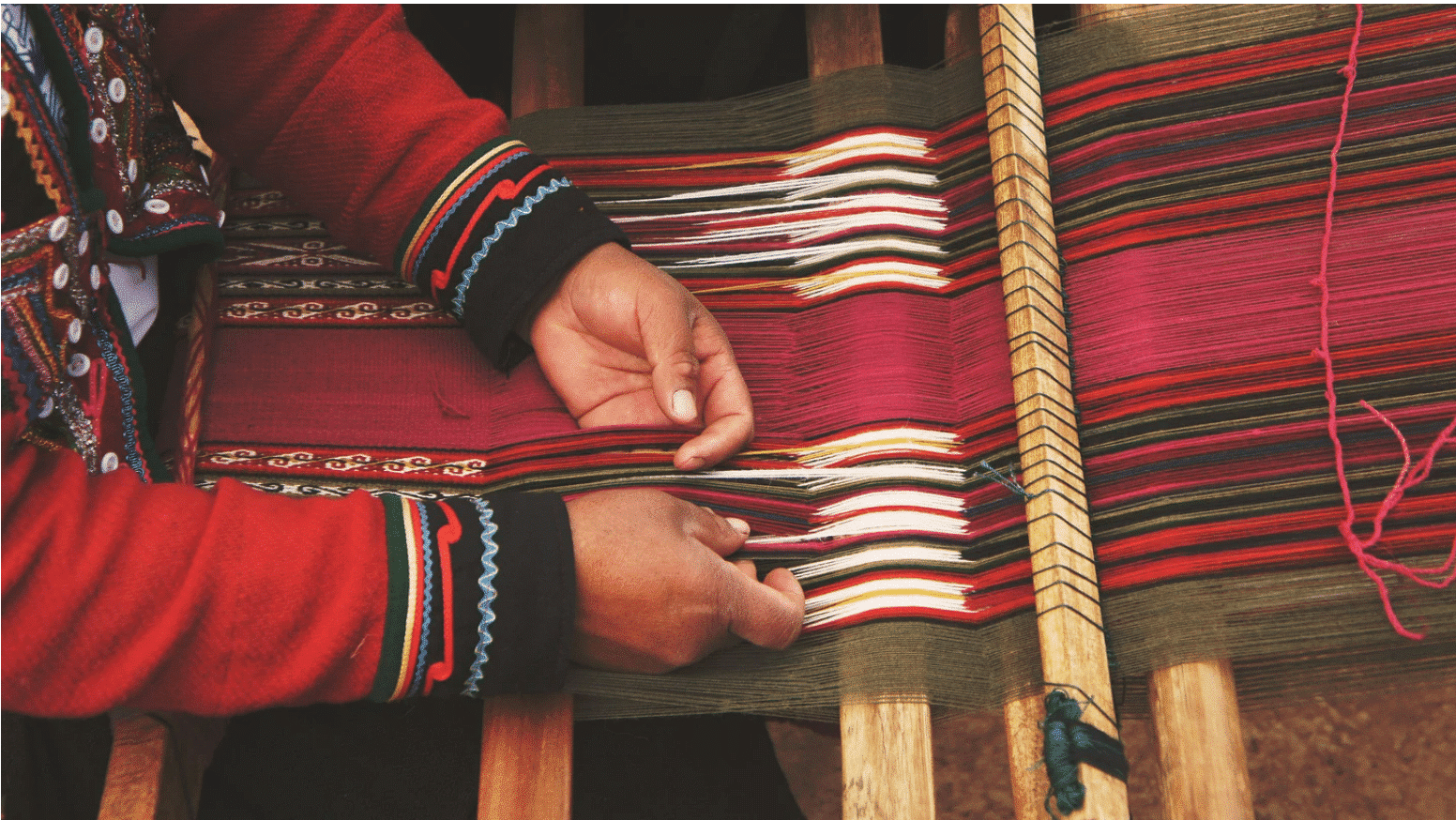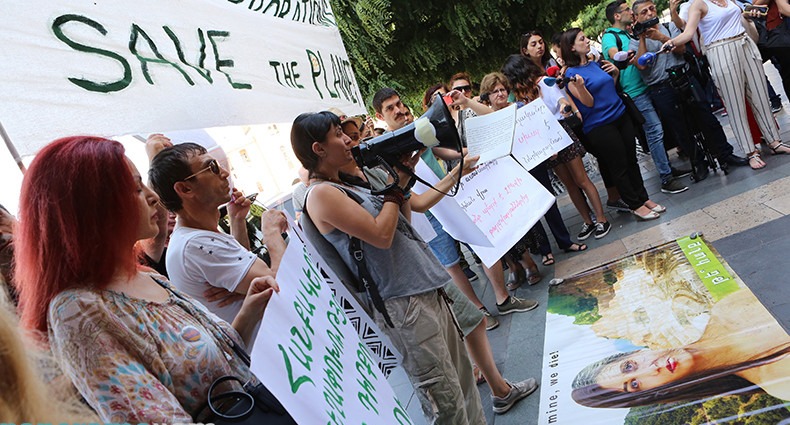 Weaving a tapestry requires time and patience. When looking at single, loose threads, it is difficult to imagine the shapes they could form. But once threads are intertwined, the subtle filaments turn into a strong cloth and beautiful patterns emerge.
Weaving a tapestry requires time and patience. When looking at single, loose threads, it is difficult to imagine the shapes they could form. But once threads are intertwined, the subtle filaments turn into a strong cloth and beautiful patterns emerge.
We are constantly learning from communities who want to nourish deep collaborations with allies to lead powerful struggles. This is why, together with grassroots and civil society partners, we started weaving an ambitious tapestry: the Community Resource Exchange (CRE).
The CRE is a system where communities can connect with collaborators around the world and work together on a diversity of strategies, to strengthen their ability to defend their rights in the context of international investments and development projects. In 2021 we launched a three-year pilot of the CRE, hosted by the Coalition for Human Rights in Development. As we embark on year two, we want to share a glimpse of the emerging patterns and the many lessons learned.
We have been busy putting together the framework for the CRE – in a sense, the loom. We established a 13-member advisory committee, created three regional grant working groups, and brought on four staff for the CRE secretariat, including a coordinator and regional facilitators in Latin America, Asia, and Africa. We designed the call for proposals even as we started doing outreach to groups.
Outside the call for proposals, we conducted outreach to 143 potential collaborators, and began developing systems for mapping out and tracking collaborations. And we also started working on 23 requests for collaboration outside the call process.
In June 2021, when we issued the first call for proposals, we received 188 applications, half of which were eligible and fell within the mission of the CRE. We are now working to facilitate collaborations for 58 community struggles, including providing financial support for 16 of those.
Weaving a tapestry takes time. However, some of the collaborations being weaved on the CRE loom are starting to take shape in ways that bridge local, national, regional and international efforts.
For example, in Armenia, the CRE secretariat is continuing to support the environmental organization Green Armenia, that has been involved in the struggle against the Amulsar gold mine for over a decade:
“We’re fighting to protect the Amulsar mountain with all our strength. The support we received is very important for us and for the local community. The environmental license issued for the mine is being challenged in court now, and we’re monitoring the hearings, continuing to identify ecological problems, and finding solutions for the eco-community in our region”, says Tehmine Yenokyan, President of Green Armenia.

Protest against the Amulsar mine in Armenia, 2018.
The CRE is also closely working with the Early Warning System (EWS), a sister network and database managed by the International Accountability Project (IAP), which tracks projects funded by the main development finance institutions. Hayk Abrahamyan, IAP’s Community Organizer and member of the CRE Advisory Committee, says:
“We closely work with the CRE, to ensure communities have verified information about projects in their territories and connect them with different collaborators. We also jointly identify trends in community-led responses and support peer-to-peer learning between communities. For example, we are planning a learning exchange for communities from Armenia and Georgia who are fighting against destructive mining projects.”
Lessons learned and next steps
As we move the CRE forward, there are some lessons that we know will make the CRE work better and stronger:
- Maximizing and mobilizing existing networks at the local level
Knowing the local context and dynamics is crucial to ensure the support is provided to those who need it most. Through this first call for proposals, we learned that we need to maximize and mobilize the already existing structures and networks, especially at the regional and national level. We plan to work with them on targeted outreach and communication work to make sure that communities have a better understanding of the CRE, and to ensure that the evaluation or proposals and creation of linkages is as fully informed regarding local dynamics as possible. In some countries and regions, we also identified some gaps and we are working on building capacity through training, learning circles, or through directly connecting communities to international groups that can assist them.
- A clearer explanation
We need to do a better job of ensuring that communities fully understand the CRE, before they go through the effort of submitting a proposal. And we need to take the time to explore with communities what types of collaborations can be developed and what are the strategies that would be most effective for their struggles. This is crucial since half of the total (94) applications we received were ineligible. On one hand this can be expected since communities are also in a learning process to see how to use the CRE. On our end, we are learning that rather than asking communities to identify all the threads they would like to use, we need to discuss what kind of textile they want to weave; we can then look with them at the types of threads available and suggest which might fit best.
- Collaborations at the forefront
The true heart of the CRE is facilitating effective and mutually beneficial collaborations. However, in the applications to the first call for proposals, and in their evaluations, the focus became the small number of grants the CRE can offer (about 24 grants of USD 5,000 each). Evaluating and following up on the 184 requests for financial assistance we received with the love and care they deserve took more time and resources from the CRE than expected.
On reflection, we have learned that we need to reshape some processes in order to ensure that collaborations are always at the forefront. Rather than issuing another global open call for proposals, for the next cohort of financial assistance we will be spending the bulk of the year deepening the collaborative work with the communities that have already reached out to us. We will then reassess the best modalities for offering financial assistance, weighing the pros and cons of targeted outreach, open calls, or some combination.
- Seeing the patterns
As we focus on weaving together groups working on specific collaborations, we also see the broader potential of the CRE – to gather learning and understanding from the aggregate patterns and trends. Even given the limited sampling of the proposals received so far, we can see different patterns emerging in our tapestry. For example:
- Most requests came from indigenous groups and women’s organizations.
- Communities confronting mining, oil and gas, infrastructure, forestry and land investments have been reaching out to the CRE across all regions, with some thematic regional focuses (such as electricity and hydro projects in Latin America; mining, land rights and fisherfolks rights in Asia; and oil and mining projects in Africa).
- Many communities have requested support for campaigns involving projects financed by various development banks.
- Many requestors want to identify the financiers behind development projects, and better leverage media and narrative strategies to advance their goals.
Going forward
“As this is a pilot of the CRE effort, we are embracing the messiness of the process” explains CRE Coordinator Carmina Obanil. “We are open to experimenting to find the best models for facilitating collaborations, and for bringing more collaborators into the system. There is a lot of potential work that the CRE can take on but time is needed to make sure that the work is done right and in such a way that those participating have ownership of the process.”
It has been an exciting first year for the CRE secretariat. As we keep working on the tapestry of the CRE with others, we will continue encountering knots and snags, and we will learn and adapt with humility and curiosity. We will keep weaving each thread with love and care, responding to those knots and snags with patience, and a deep appreciation for all the hands creating this with us. We can already see some beautiful symbols, patterns, and textures emerging which though blended are very distinct as well. What keeps us going is the knowledge that this tapestry of resilience and resistance we are weaving together will be greater than the sum of its parts.
We invite you to share your experience and thoughts about how the CRE moves forward together. Please add your thoughts in the comment section below this blog or write to lcotza@rightsindevelopment.org if you wish to write a blog on your CRE experience.
